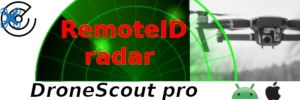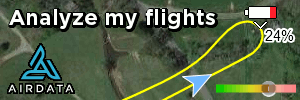- Joined
- Sep 3, 2018
- Messages
- 69
- Reactions
- 53
- Age
- 68
Hi
I was thinking (I know - always dangerous), I wanted to establish a set of pre flight checks (PFC) as part of my PfCO, the UK version of 107?
I had a hunt around and found some examples that I could tweak for the M2P. I then figured it might be good to put them up here and see if anyone has an opinion, if they see a missing point in the process, or anything else that might lead to a standardised set of PFCs we could all adopt.
Here's where I'm at. Tweaked for the M2P and an iPad4:
Cut and Paste, edit at will, post up below!
PLEASE highlight your changes in red so we can see them, or add a 'deleted' message on the line you take out
Preparation (eve of flight):
Packing list:
Pre flight (on location)
Prepare the aircraft
Powering up
Begin Flight
End Flight
Post Flight
I was thinking (I know - always dangerous), I wanted to establish a set of pre flight checks (PFC) as part of my PfCO, the UK version of 107?
I had a hunt around and found some examples that I could tweak for the M2P. I then figured it might be good to put them up here and see if anyone has an opinion, if they see a missing point in the process, or anything else that might lead to a standardised set of PFCs we could all adopt.
Here's where I'm at. Tweaked for the M2P and an iPad4:
Cut and Paste, edit at will, post up below!
PLEASE highlight your changes in red so we can see them, or add a 'deleted' message on the line you take out
Preparation (eve of flight):
- Check for Firmware Updates
- Check for DJI GO 4 app updates
- 6x batteries, RC and iPad charged to 100%
- Plan flight location and route for objectives
- Check forecast on aeroweather app (check for hours ahead)
Packing list:
- Mavic 2 Pro Drone
- Batteries x6
- Remote Controller (RC)
- (2) Foldable Propellers
- Micro SD cards x2
- iPad
- Cable to connect RC to iPad x2
Pre flight (on location)
- Check DroneSafe app for
- Check SkyWise app for NOTAMs
- Check visible weather conditions, wind, temperature, etc.
- Check for visibility is well outside 400ft/500mtrs
- Inspect overall aircraft/battery for damage
- Check SUAV Battery level
- Check RC battery level
- Check Phone or Tablet battery level
Prepare the aircraft
- Unfold arms of Mavic
- Extend propellers
- Remove gimbal cover (and stow!)
- Attach ND filters (if needed)
- Insert Micro SD Card
- Unfold the antennas on RC
- On the side of the RC, make sure “Sport" is off
- Set SUAV on a flat, level surface
- Connect iPad to bottom of RC and cable up
Powering up
- Turn on iPad and enter the DJI GO 4 app
- Turn on the RC
- Turn on the SUAV (red, green, amber flashing on legs)
- The SUAV will make the “DJI chime” (for lack of a better term)
- The gimbal will move
- Connect SUAV to DJI GO 4
- Select ISO, iris and shutter speed
- Format SD card
- Wait for GPS & compass to lock
- Check for RC go status
- Check for SUAV go status (green blinking in P-Mode)
- Check for automatic or set a manual RTH point
Begin Flight
- Start motors and allow to idle
- Inspect for irregular vibrations or movements, gimbal placement
- Check for crew clearance
- Check observers (if any) are ready and have VLOS (if remote)
- Final check for obstructions or take off and flight risks
- Launch the SUAV to hover (2mtrs), check stable hover, pitch, yaw, lift and descend controls
- Check exposure and adjust if necessary
- Recheck GPS signal strength
- Continue flight as per flight plan
End Flight
- Check landing area clearance
- Determine wind direction and bring SUAV downwind of land site
- Warn crew of incoming SUAV
- Orientate SUAV for landing
- Warn crew of SUAV landing
- Land SUAV and power off motors, let stand to cool with fans
- Turn off iPad and RC controller
- Once cooled, turn off SUAV
Post Flight
- Turn off SUAV before removing battery
- Power down RC and iPad
- Check SUAV for damage and dust/debris in air intakes










